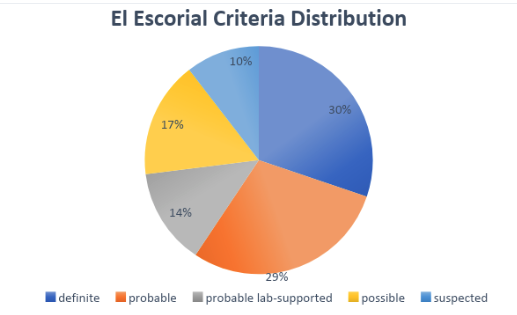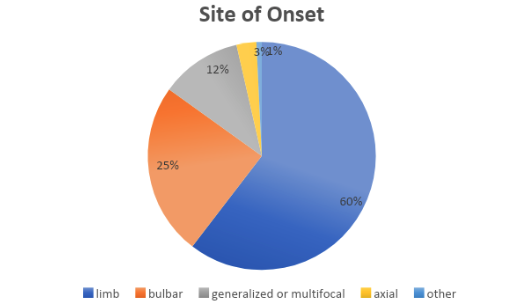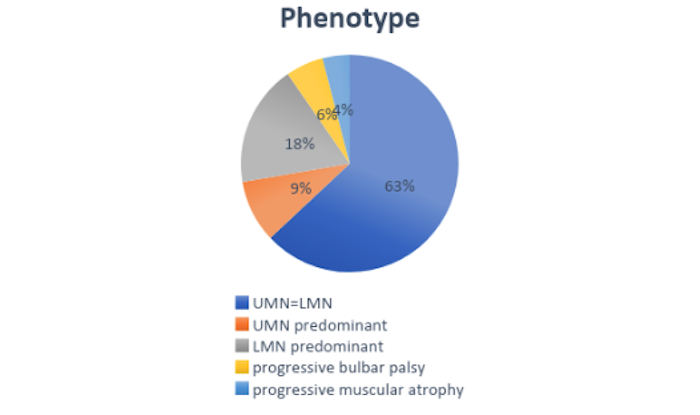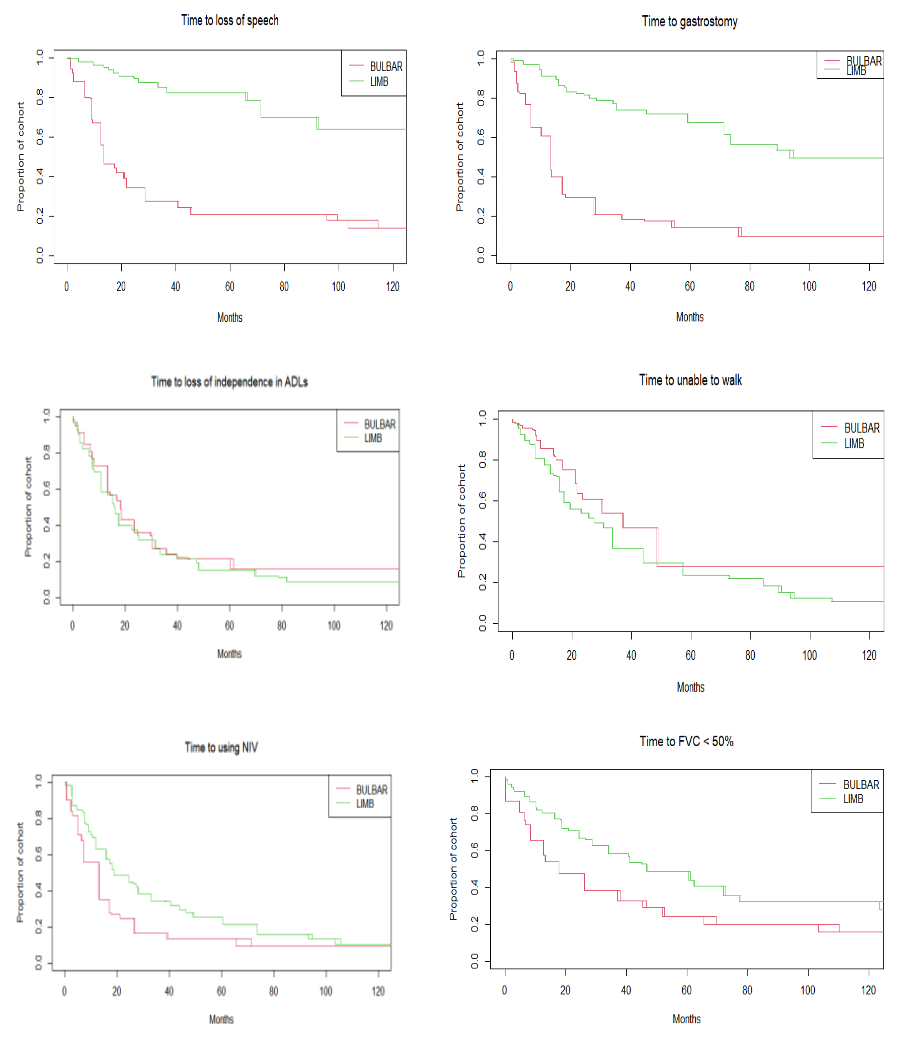Data are reported as of December, 2022.
Please refer to Berger et. al (2023) for a full description of cohort characteristics.
At the time of publication, we had enrolled 1,726 participants with a dated diagnosis of ALS. In addition to these patients, 68 participants with PLS and 57 participants with other motor neuron diseases were enrolled.
Demographics
Of our total dataset, 40.9% are women. The median age at symptom onset is 62 years (interquartile range - IQR, 54-69).
Racial classification among US participants is shown in the table.

ALS characteristics at enrollment
The proportions of participants by El Escorial Criteria, site of onset, and ALS phenotype at enrollment is shown in Figures 1-3. The median diagnostic delay is 12 months (interquartile range - IQR, 7-21; mean 19 months). The median ALSFRS-R score at enrolment is 36 (IQR, 30-41).
Genetic testing was performed in 1,086 participants. Of these, 13.8% were positive for ALS-related pathogenic variants, including 70 (7.4%) with C9orf72 repeat expansions and 34 (3.6%) with SOD1 mutations.



Longitudinal Features
The median follow-up interval between ALSFRS-R scores is 3.2 months (IQR, 3.0-5.0). The median number of recorded ALSFRS-R assessments per participant is 4 (IQR 2-7), and the median time from first to last assessment is 15.7 months (IQR 8.0-30.0). The median duration of observation is 14.5 months (IQR, 6.4-27.1 months; mean 20.1 months)
Riluzole was taken at least once by 1,294 patients (74.9%). The median duration of riluzole treatment is 19 months (IQR, 10-30 months; mean, 24 months). Edaravone was used at least once in 257 patients (14.8%). The median duration of treatment is 16 months (IQR, 10-26 months; mean, 19 months).
Time to Milestones

